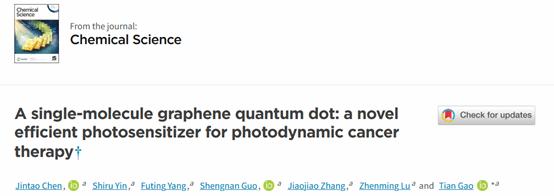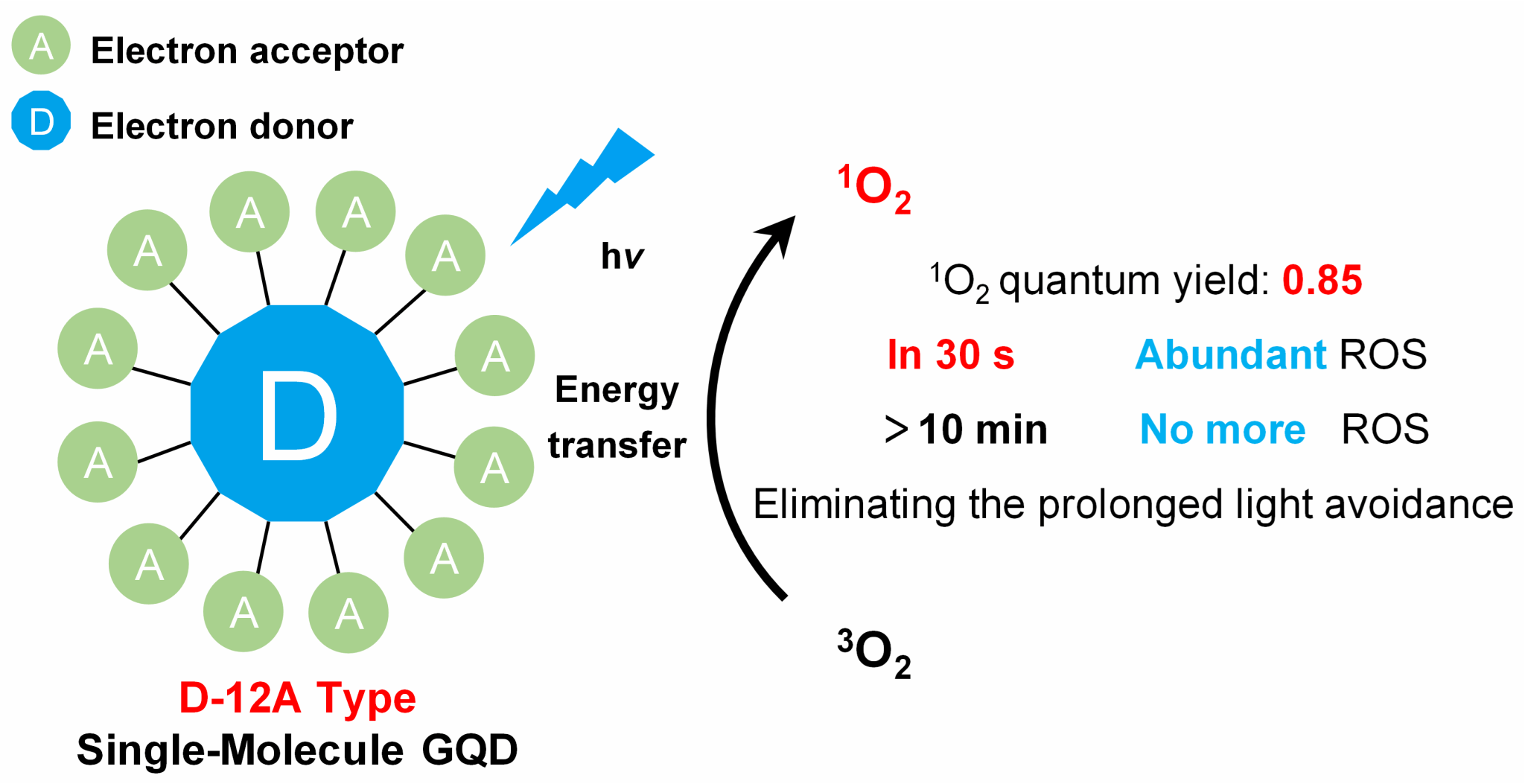Published by: School of Chemistry and Chemical Engineering Edited by: Wang Xiangyu
WUST News - Recently, the team led by Associate Professor Gao Tian from the School of Chemistry and Chemical Engineering at the Wuhan University of Science and Technology (WUST) made significant progress in the field of single-molecule nanomedicine. The team published a high-level research paper titled A Single-Molecule Graphene Quantum Dot: A Novel Efficient Photosensitizer for Photodynamic Cancer Therapy in the prestigious journal Chemical Science, a flagship publication of The Royal Society of Chemistry, with WUST as the sole corresponding institution. Team member Chen Jintao was the first author, and Gao Tian was the sole corresponding author. The paper was solely affiliated with WUST's Institute of Nuclear Magnetic Resonance and Molecular Science and the School of Chemistry and Chemical Engineering.

Although nanomedicines exhibit excellent performance and potential, their complex microstructures pose significant challenges for clinical application.
This study successfully synthesized a hydrophilic single-molecule graphene quantum dot (HPGQD) with a defined molecular structure. This breakthrough overcomes the traditional bottleneck of complex and difficult-to-control graphene quantum dot (GQD) structures. Using an innovative organic synthesis strategy involving a single benzene ring molecule as the precursor, the team achieved the precise preparation of an atomically defined GQD core containing 132 planar sp2-conjugated carbon atoms. This advancement bridges the gap between organic and inorganic chemistry in nanomaterial synthesis and eliminates the structural uncertainties that have hindered the clinical application of carbon nanomaterials.
The unique D-12A structure of HPGQD, comprising one large electron donor center and 12 electron acceptors, endows it with exceptional reactive oxygen species (ROS) generation capability. Its singlet oxygen (¹O₂) quantum yield reaches as high as 0.85, surpassing that of traditional photosensitizers. Under illumination, a large quantity of ROS can be rapidly generated within 30 seconds and cleared autonomously after 10 minutes. This characteristic addresses a fundamental clinical issue in existing photodynamic therapy (PDT), where patients need to avoid light for a prolonged period. This significantly enhances treatment safety and patient compliance and marking a critical step towards the practical application of PDT technology.

HPGQD emits bright fluorescence in both cellular and animal models and demonstrates remarkable PDT efficacy against tumors, achieving an IC50 as low as 0.22 μmol L-1 against tumor cells and a 71% tumors inhibition rate in nude mice. It also shows excellent safety, with no significant impact on the body weight, organs, or blood system of experimental animals during treatment. This "high-efficiency, low-toxicity" profile establishes HPGQD as a novel nanophotosensitizer with dual diagnostic and therapeutic potential, offering a promising tool for precision cancer theranostics.
This work pioneers a single-molecule design strategy for carbon nanomaterials and accelerates their clinical translation. The successful development of HPGQD sets a new benchmark in the field of nanotherapy. Its well-defined molecular structure, ultra-high singlet oxygen quantum yield, and exceptional anti-tumor efficacy signify that the design of carbon-based nanophotosensitizers has entered the era of atomic precision. This advancement could reshape the landscape of cancer photodynamic therapy and open new avenues for developing and translating next-generation nanomedicines.
This research received support from the National Natural Science Foundation of China (22403072), the Hubei Province Talent Program (2021), the Hubei Provincial Department of Education (Q20231103, B2021014), the Wuhan University of Science and Technology Research Fund (1050029), and the Hubei Provincial Key Laboratory of Coal Conversion and New Carbon Materials (WKDM202110).
Professor Gao Tian's team specializes in the innovative design and application of luminescent carbon nanomaterials. Recent high-impact publications are available via the following links:
https://doi.org/10.1039/D5SC03226A
https://doi.org/10.1002/adom.202400458
https://doi.org/10.1002/adom.202301470
https://doi.org/10.1039/D3GC02702C
(School of Chemistry and Chemical Engineering)